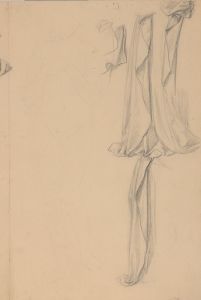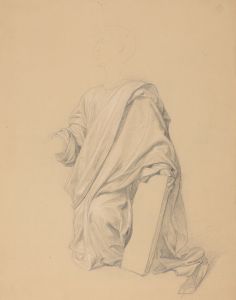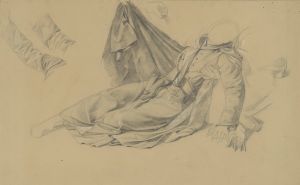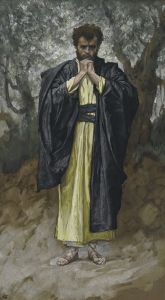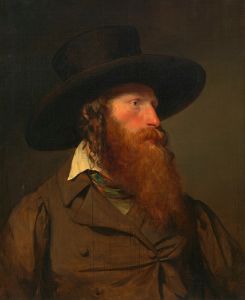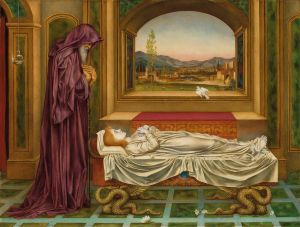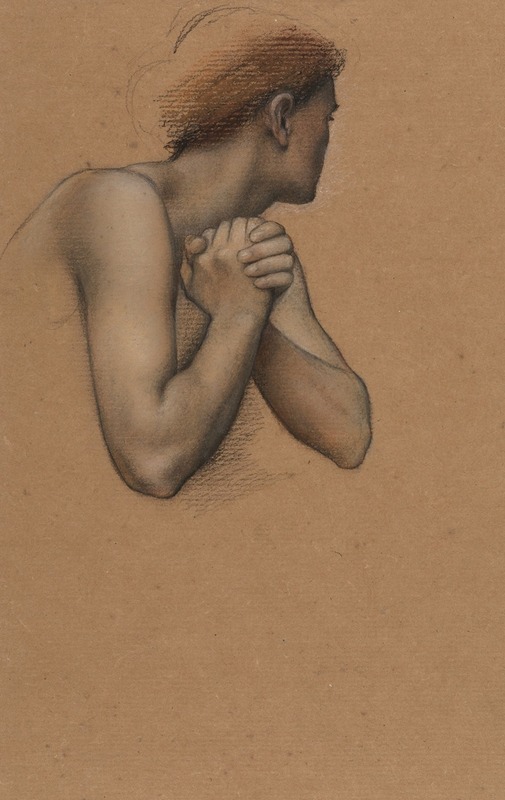
Figure study with clenched hands
A hand-painted replica of Evelyn De Morgan’s masterpiece Figure study with clenched hands, meticulously crafted by professional artists to capture the true essence of the original. Each piece is created with museum-quality canvas and rare mineral pigments, carefully painted by experienced artists with delicate brushstrokes and rich, layered colors to perfectly recreate the texture of the original artwork. Unlike machine-printed reproductions, this hand-painted version brings the painting to life, infused with the artist’s emotions and skill in every stroke. Whether for personal collection or home decoration, it instantly elevates the artistic atmosphere of any space.
Evelyn De Morgan was a notable English painter associated with the Pre-Raphaelite movement, known for her allegorical works and distinctive style that often incorporated themes of spirituality and mysticism. One of her lesser-known works, "Figure Study with Clenched Hands," exemplifies her skill in capturing human emotion and form.
"Figure Study with Clenched Hands" is a drawing that showcases De Morgan's proficiency in anatomical accuracy and her ability to convey intense emotion through body language. The study focuses on the human figure, emphasizing the tension and expressiveness of clenched hands. This particular aspect of the drawing highlights De Morgan's interest in the human form and her commitment to exploring the depth of human emotion through art.
Evelyn De Morgan was born in London in 1855 and was initially named Mary Evelyn Pickering. She was the daughter of upper-middle-class parents who supported her artistic pursuits. De Morgan received formal art education at the Slade School of Fine Art, where she honed her skills in drawing and painting. Her education at the Slade was instrumental in developing her technical abilities, which are evident in her detailed figure studies.
De Morgan's work was heavily influenced by the Pre-Raphaelite Brotherhood, a group of English painters, poets, and critics founded in 1848. The Pre-Raphaelites sought to return to the abundant detail, intense colors, and complex compositions of Quattrocento Italian art. Although De Morgan was not an official member of the Brotherhood, her work shares many of their stylistic and thematic concerns, such as a focus on beauty, nature, and emotion.
"Figure Study with Clenched Hands" is a testament to De Morgan's dedication to capturing the subtleties of human expression. The drawing likely served as a preparatory study for a larger work, as was common practice among artists of her time. Studies like this one allowed artists to experiment with composition, anatomy, and emotion before committing to a final piece.
Throughout her career, De Morgan's work often featured strong, emotive figures, frequently women, who conveyed a sense of inner strength and resilience. Her interest in spirituality and the human condition is evident in many of her paintings, which often depict allegorical or mythological subjects. This focus on the spiritual and emotional aspects of human experience is a hallmark of her work and is reflected in "Figure Study with Clenched Hands."
Evelyn De Morgan's legacy is marked by her contributions to the Pre-Raphaelite movement and her unique approach to depicting the human form. Her work continues to be celebrated for its technical skill and emotional depth. "Figure Study with Clenched Hands" remains an example of her ability to convey complex emotions through simple yet powerful imagery. While this particular study may not be as widely recognized as some of her larger paintings, it nonetheless provides insight into her artistic process and the themes that permeated her work.
De Morgan passed away in 1919, leaving behind a rich body of work that continues to be studied and appreciated by art historians and enthusiasts alike. Her drawings and paintings are housed in various collections, including the De Morgan Foundation, which is dedicated to preserving and promoting the works of Evelyn De Morgan and her husband, the ceramicist William De Morgan.





